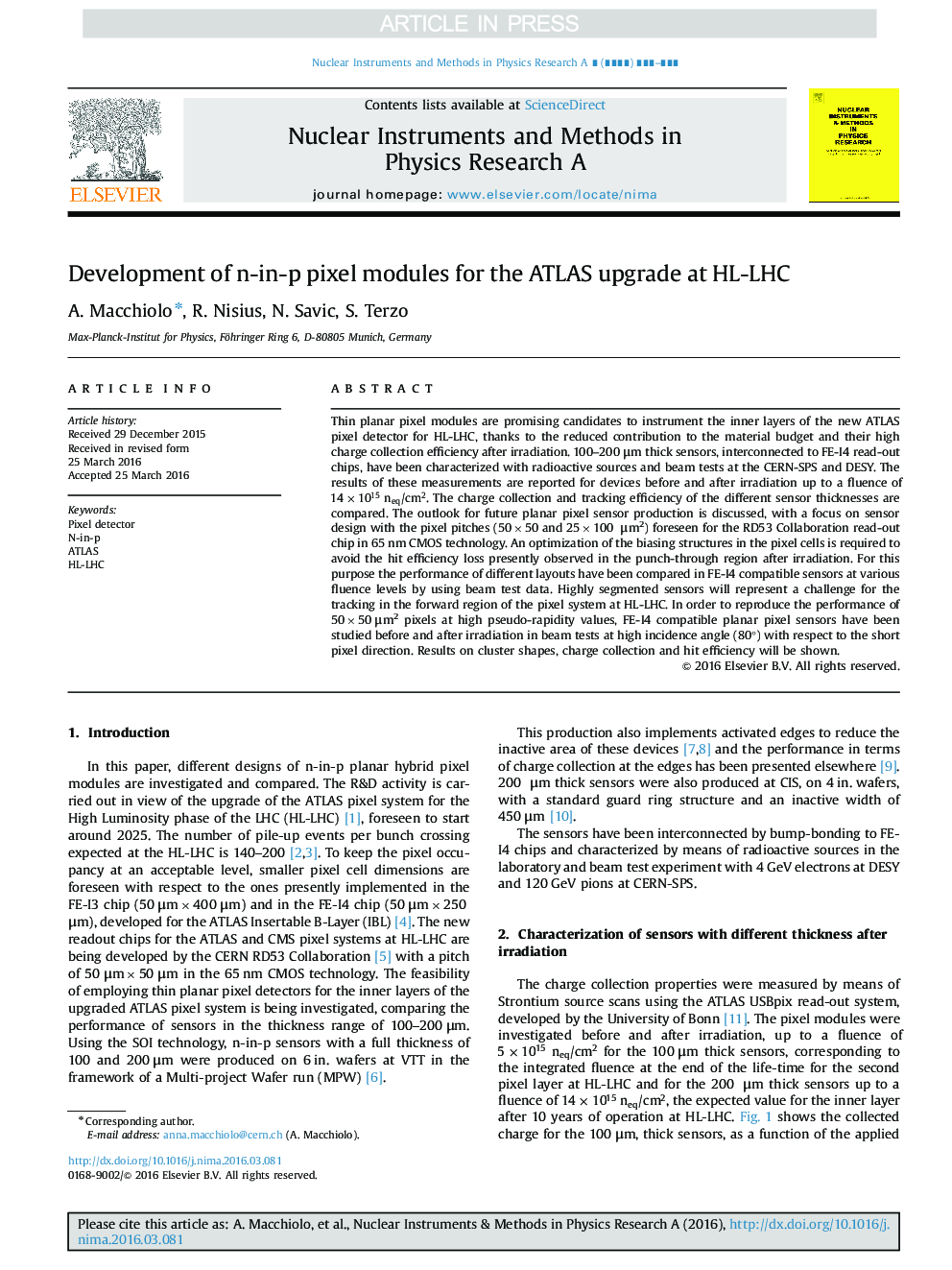| Article ID | Journal | Published Year | Pages | File Type |
|---|---|---|---|---|
| 8168680 | Nuclear Instruments and Methods in Physics Research Section A: Accelerators, Spectrometers, Detectors and Associated Equipment | 2016 | 5 Pages |
Abstract
Thin planar pixel modules are promising candidates to instrument the inner layers of the new ATLAS pixel detector for HL-LHC, thanks to the reduced contribution to the material budget and their high charge collection efficiency after irradiation. 100-200 μm thick sensors, interconnected to FE-I4 read-out chips, have been characterized with radioactive sources and beam tests at the CERN-SPS and DESY. The results of these measurements are reported for devices before and after irradiation up to a fluence of 14Ã1015 neq/cm2. The charge collection and tracking efficiency of the different sensor thicknesses are compared. The outlook for future planar pixel sensor production is discussed, with a focus on sensor design with the pixel pitches (50Ã50 and 25Ã100  μm2) foreseen for the RD53 Collaboration read-out chip in 65 nm CMOS technology. An optimization of the biasing structures in the pixel cells is required to avoid the hit efficiency loss presently observed in the punch-through region after irradiation. For this purpose the performance of different layouts have been compared in FE-I4 compatible sensors at various fluence levels by using beam test data. Highly segmented sensors will represent a challenge for the tracking in the forward region of the pixel system at HL-LHC. In order to reproduce the performance of 50Ã50 μm2 pixels at high pseudo-rapidity values, FE-I4 compatible planar pixel sensors have been studied before and after irradiation in beam tests at high incidence angle (80°) with respect to the short pixel direction. Results on cluster shapes, charge collection and hit efficiency will be shown.
Keywords
Related Topics
Physical Sciences and Engineering
Physics and Astronomy
Instrumentation
Authors
A. Macchiolo, R. Nisius, N. Savic, S. Terzo,
